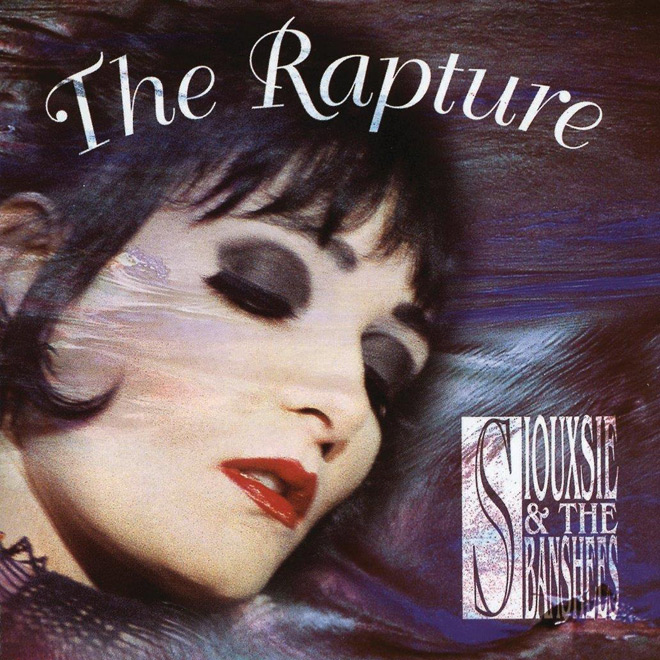Unarguably, Siouxsie & the Banshees was one of the pioneering purveyors of Post-Punk Gothic/New Wave music, along with The Cure (“The Hanging Garden”), Gene Loves Jezebel (“Psychological Problems”), The Bølshøi (“Looking for a Life to Lose”), Clan of Xymox (“Blind Hearts”), and many others. This was the reason many enthusiasts of the genre not only celebrated the release of the English band’s 11th studio album, The Rapture, which was a brilliant mix of Pop and Gothic; but also mourned, for the said record was to become Siouxsie & the Banshees’ last hurrah.
Formed in 1976, in London, England, Siouxsie & the Banshees, in its long and prolific career, managed to muster an 11-album discography—from 1978’s The Scream to the quarter-of-a-century-old The Rapture; and to carve an influential place in the pantheon of Post-Punk music, leaving a string of memorable singles that included “Mirage,” “Playground Twist,” “Happy House,” “Spellbound,” “Slowdive,” “Swimming Horses,” “Cities in Dust,” “The Killing Jar,” and “Kiss Them for Me.”
By the late ’80s till the time they started working on their final opus, Siouxsie & the Banshees were founders Siouxsie Sioux (vocals) and Steve Severin (bass), and longtime members Budgie (drums, percussion), Martin McCarrick (cello, keyboards, accordion), and John Klein (guitar). They disbanded in 1996; and apart from a short reunion in 2002 by Sioux, Severin, Budgie, and guitarist Knox Chandler for a couple of concerts, Siouxsie & the Banshees are yet to regroup again. In lieu of their absence, celebrate instead the legacy that Siouxsie & the Banshees had left behind, beginning with The Rapture, which has just turned 25.
Released on January 16, 1995, via Polydor/Geffen Records, The Rapture was both the 11th and last album by Siouxsie & the Banshees. Those who were familiar with the band’s music more through its early, darker-themed records would have surely been surprised with the glitter and gloss of The Rapture. However, if one did consider what came immediately before it—in particular, 1988’s Peepshow and 1991’s Superstition—then one would have noticed the smooth transition.
The Rapture opened jubilantly with its lead single—the delectable Guitar Pop “O Baby,” which found the often dark and gloomy band in its most sunny, upbeat, and positive predisposition—both musically and lyrically. This was followed seamlessly by a slightly fuzzy yet melodic track, “Tearing Apart,” which would have fit well onto a playlist that included similar Goth/Fuzz Pop songs like Garbage’s “Stupid Girl,” The Heart Throbs’ “Dreamtime,” All About Eve’s “Flowers in Our Hair,” and Fuzzbox’s “Pink Sunshine.”
Siouxsie & the Banshees then went back to the overall bright and shiny mood of the album with the energetic, psychedelic shimmer of “Stargazer,” reminding the initiated of Echo & the Bunnymen’s “Bombers Bay,” The Editors’ “A Ton of Love,” The Jazz Butcher’s “She’s a Yo-yo,” and The Wild Flowers’ “A Kind of Kingdom.” And then there was the slow, dirge-like melodrama of “Fall from Grace”—a perfect display of Siouxsie & the Banshees’ occasional penchant for happy-sad balladry.
With the Tribal/Gothic flare of “Not Forgotten,” Budgie’s percussive flair and Sioux’s ritualistic chants emerged once again—serving as the springboard to the then couple’s penultimate album as The Creatures (Anima Animus), but that is for a different story. And then there was “Sick Child”—hypnotic, soulful, delicate, exuding a Middle Eastern ambiance, and showcasing McCarrick’s orchestral parts. Still in the same lullaby-esque and playful vibe, “The Lonely One” was a standout Progressive gem, courtesy of Severin’s tubular bass lines; McCarrick’s accordion, string, and piano flourishes; Klein’s guitar slides; Budgie’s subtly funky beats; and Sioux’s yodels and wails.
Siouxsie & the Banshees then returned the listener to the driving, rhythmic mode of The Rapture as “Falling Down” played next—a good mix of strings and subtle distortion. The ensuing “Forever” was another catchy track oozing with Jangle/Dreampop sensibilities. The title-track was a welcome aberration—an 11-minute Classical/Progressive-inspired epic that sounded like a throwback from the band’s early-’80s Gothic/New Wave years, especially when The Cure’s Robert Smith was still the guitarist of the band.
The second-to-the-last song, “The Double Life,” was cinematic, exuding faint and soft echoes of Bauhaus (“Bela Lugosi’s Dead”). Finally, Siouxsie & the Banshees delivered a proper album closer, as the Gothic Rock track “Love Out Me” burst with its boulders of tom-toms, splinters of guitars, flanged bass, staccato strings, and the Goth queen’s rock-out vocals—further cementing the band’s special place in the annals of Gothic music populated by the likes of The Sisters of Mercy (“Nine While Nine”), The Mission (“Wasteland”), and The Danse Society (“Heaven Is Waiting”).
Siouxsie & the Banshees’ demise was disheartening, yes; but in consolation, the band was one of the instigators of the Post-Punk movement; it was there right from the start. Siouxsie & the Banshees might have been gone now, but its members had seen the best of their days. Thus, the Gothic icons’ fair share of contributions to the history and archives of the genre had compensated well for their ultimate retirement. The Rapture remains a beautiful farewell album, a graceful and respectable exit for one of the most important bands England has produced.





